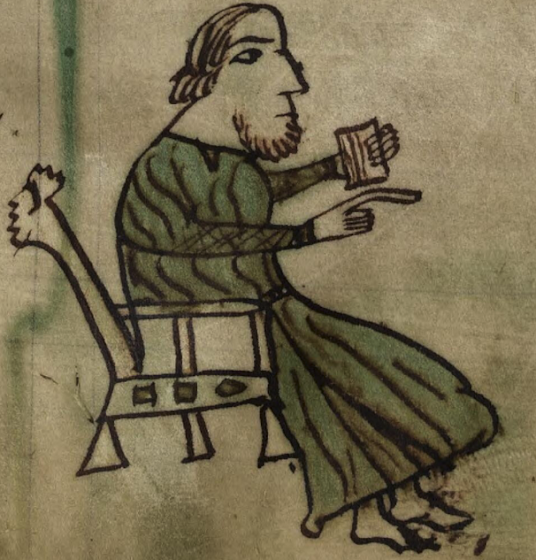I recently came across this fabulous illustration from the Laws of Hywel Dda in the collection of the National Library of Wales, about which they say:
"A Latin text of the Laws of Hywel Dda, being one of the earliest, by a single scribe and dating from the mid 13th century. The notes on a piece of paper pasted onto the inside the end cover which is now partly perished have been transcribed by Gwenogvryn Evans.
The 'Laws of Hywel Dda' is the term applied to a system of native Welsh law named after Hywel Dda (died 950) who is credited with its codification. None of the surviving Welsh law manuscripts, however, is earlier than the second quarter of the 13th century. Although they contain law that is of 12th- and 13th-century origin, scholars are agreed that these manuscripts contain a core of matter that is much earlier in date. Most of these books are small in size and were probably designed as 'pocket-books' to be carried about by lawyers rather than to be kept on library shelves. Peniarth MS 28 belongs to this first generation of law-books, being written probably in the middle of the 13th century, a date arrived at by Daniel Huws on palaeographical and physical grounds; this challenges J. Gwenogvryn Evans's dating of the last quarter of the 12th century. However, the manuscript differs from its contemporaries in a number of respects. It is much larger than the other law-books of the period, probably intended for a library rather than the pocket of a lawyer, and it is written in Latin rather than in Welsh. But what singles it out most is the series of illustrations it contains portraying the king and the officials of his household. The conclusion to be drawn is that the scribe of Peniarth MS 28 had been commissioned to write a special copy of the Welsh laws, probably a presentation copy for some dignitary. The fact that it is written in Latin suggests an ecclesiastic rather than a lawyer, maybe a non-Welshman. Textual evidence suggests that it was probably written in south-west Wales."
Note the tapered legs, arm rests and high back. Who knows what woods were used but my money would be on ash and elm?



